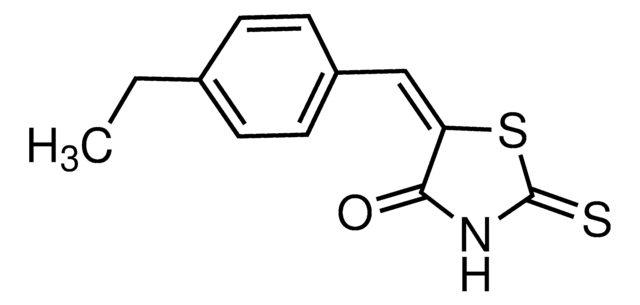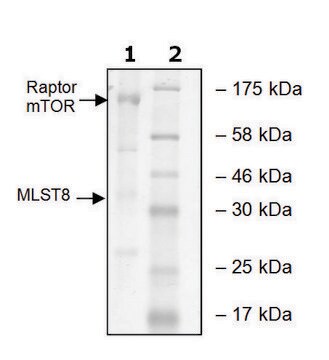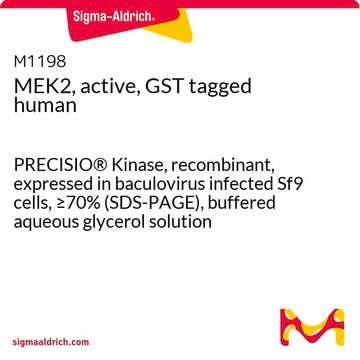일반 설명
A cell-permeable, blood-brain barrier permeant, bioavailable trisubstituted pyridine compound that inhibits c-Myc transcriptional activity. Shown to directly bind to both the monomeric c-Myc (Kd = 6.5 nM) and to c-Myc-Max heterodimer (Kd = 13.4 nM) with high affinity and disrupt c-Myc-Max interaction. Displays a very weak affinity towards Max-Max homodimer (Kd >1 µM). Also interferes with Max homodimerization, albeit to a lesser extent than c-Myc-Max heterodimerization. Shown to inhibit the c-Myc-driven proliferation of NCI-H460, MDA-MB-231, and SUM-159PT and several other cancer cell lines (IC50 = 5-10 µM). Also diminishes the proliferation of Burkitt lymphoma cell lines expressing high levels of c-Myc (IC50 = 2.5 µM). Suppresses the growth of MDA-MB-231 cells in a xenografted nude mice model (10 mg/kg, i.p., q.d.).
Please note that the molecular weight for this compound is batch-specific due to variable water content.
A cell-permeable, trisubstituted pyridine compound that displays Myc-selective affinity (Kd = 6.5 nM/Myc homodimer, 13.4 nM/Myc-Max dimer, >1.0 µM/Max homodimer) and is 4-times more potent against Myc-Max than Max-Max in DNA-binding assays. Effectively prevents focal microtumors formation following N-Myc, c-Myc, as well as ATG- or CAG-c-Myc transformation of cultured chick embryo fibroblasts/CEF (>99.9% inhibition at 10 µM in ATG-c-Myc-transformed cultures), while exhibiting much reduced or little potency against cultures transformed by v-Src (no inhibition up to 20 µM), v-Jun or PI 3-K H1047R (45.5% inhibition at 10 µM). Selectively inhibits Myc-dependent proliferation of human & avian cultures (Effective conc. 25 to 50 µM; IC50 1 to 10 µM), while exhibiting little potency against Myc-independent growths of human skin fibroblasts, non-transformed, v-jun-transformed, or methylcholanthrene-transformed quail embryo fibroblasts even at a high concentration of 50 µM. Reported to suppress MDA-MB-231-derived tumor expansion in mice (10 mg/kg/d i.p.) in vivo with a concomitant upregulation of N-Myc downregulated gene 1/NDRG1 protein level in tumor tissue. Pharmacokinetics studies reveal good blood-brain barrier permeability in mice ([Drug] = 3.5 µM/plasma & 12.4 µM/brain 4 h post single 10 mg/kg i.p. dosage) and a plasma half-life of 1.84 h in rats following a single i.v. dose of 1 mg/kg.
기타 정보
Hart, J.R., et al. 2014. Proc. Natl. Acad. Sci. USA.111, 12556.









